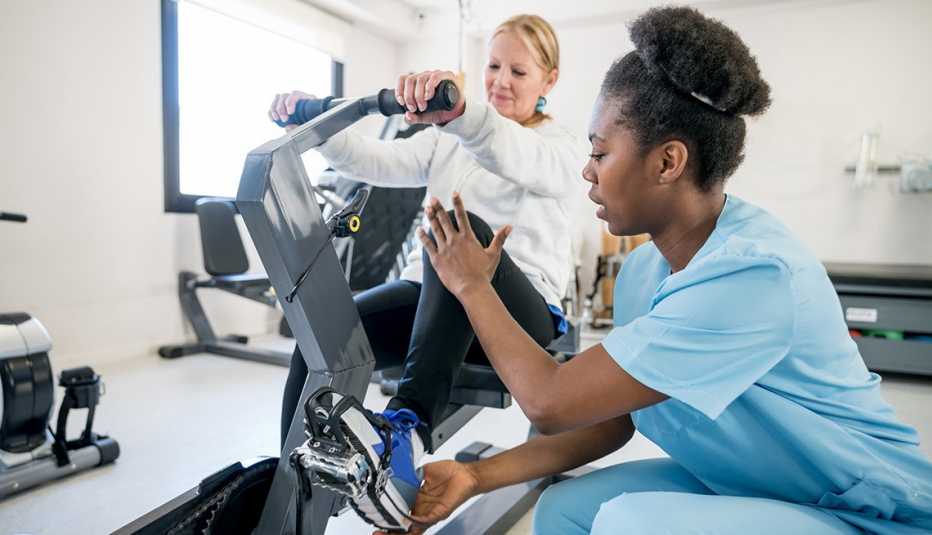Staying Fit


What if rehab for stroke survivors included the kind of heart-pounding aerobic activity commonly prescribed for people who’ve experienced a heart attack?
True, many people who leave the hospital after a stroke have some limitations in their movements. So rehab for stroke survivors usually focuses more on physical and occupational therapy aimed at “improving specific impairments in walking, strength, balance and coordination,” says Elizabeth Regan, clinical assistant professor and physical therapist at the University of South Carolina. “Limited time is spent working to achieve improvements in aerobic fitness.”


AARP Membership— $12 for your first year when you sign up for Automatic Renewal
Get instant access to members-only products and hundreds of discounts, a free second membership, and a subscription to AARP the Magazine.
The benefits of exercise after a stroke
But there’s a place for aerobic exercise for the more than 795,000 U.S. adults who have a stroke each year, recent research suggests. After looking at 19 studies, Regan and colleagues concluded that survivors could indeed benefit from aerobic exercise in the same way cardiac patients do. And that’s regardless of the specific type of activity they choose, how mobile they are or how much time has passed since they had the stroke, the team reported in 2019 in the Journal of the American Heart Association.
To measure that improvement, the researchers looked at the results of what’s known as the six-minute walk test, a standard way of measuring fitness by comparing the distance subjects can walk in a given amount of time. For stroke survivors who could walk less than 315 yards in six minutes (going roughly the length of three football fields), completing an aerobic exercise program helped 58 percent of them tack on an additional 58 yards. Not surprisingly, those with mild movement impairments saw the most benefit.
Types of physical activity for stroke recovery
It’s important to start at the right level and build up gradually:
- Gait training exercises
- Stretching and range-of-motion exercises
- Aerobic exercise
- Balancing exercises
- Strength-training exercises
Source: American Stroke Association
“Aerobic exercise specifically impacts endurance,” Regan says. “Doing at least 30 minutes of aerobic conditioning, two to three times a week, for eight to 18 weeks can make a difference in walking and general endurance. And it can translate to the ability to move more, which can impact how much a stroke survivor can do in the community.”
Subsequent research confirms these findings. In a study published in 2021 in Cerebrovascular Diseases, researchers compared more than 2,900 stroke survivors who did cardiac rehab, defined in this instance as a mix of aerobic activity and resistance training, with survivors who did not. The exercisers had significantly better health outcomes two years after their stroke than the non-exercisers. They were 53 percent less likely to die of any cause, 12 percent less likely to have another stroke and 36 percent less likely to need a return visit to the hospital. Another report from 2023 in JAMA Network Open found that stroke severity did not stop people from getting benefits of being more physically active, even at low levels.





































































More From AARP
How to Prevent Middle-Aged Strokes
Meanwhile, rates are decreasing in older adults
Fit & Fun Challenge
Learn more about how physical activity may support brain health at AARP® Staying Sharp®
What to Know About Caring for Someone Who Had a Stroke
Experts share ways to help a loved one regain strength and independence
Recommended for You